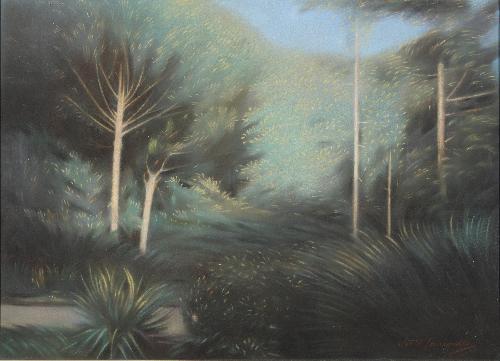CANEGALLO SEXTO
GENOA 1892 - 1966
Pupil of Luxardo, Tullio Quinzio, Lorenzo Massa and Alfredo Luxoro. From an initial traditionalist painting he turned his attention to those artists who seemed to foresee the great changes that would soon take place on an international level. He referred to Nomellini, Previati, Merello, Cominetti. Already in a work carried out in 1912, "Children who fish", pictorially resolved in a manner similar to Luxardo, Canegallo showed a clear tendency to assimilate the dictates of Divisionism. This will materialize in the execution of the painting "Brave boy" executed with a pointillist technique in dots. In 1915 he will create the work "Carnevale", where the references to the painting of Cominetti and Nomellini are clear. In this painting the color, in dots, is arranged concentrically, anticipating what will be the artist's future experiments. The meeting that was decisive for him took place in Milan in 1914, where he met the painter Romolo Romani. Like him, Canegallo will organize the execution of his work in cycles and will move on to a symbolic-scientific painting, based on geometric schemes, tending to deepen the study of the irradiation of light. Among his main exhibitions of him we remember that of Rome in 1920, where he will present 50 works in the foyer of the Argentina theater. This exhibition will then be repeated in the same year in Genoa, at the Carlo Felice Theater. He will exhibit in Paris in 1925, Galerie La Boetie. Great retrospective in Genoa, at the Galleria Rotta, in 1968 and in Milan in 1978. his works can be found at the Nervi Gallery of Modern Art in Genoa, and in the Mitchell Wolfson Jr. Collection, Genoa.

